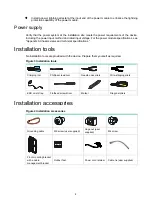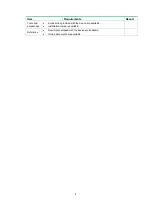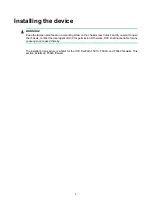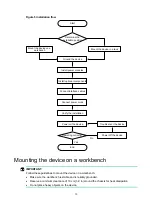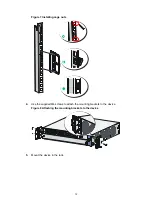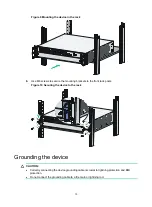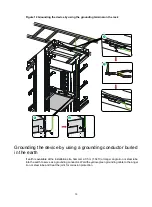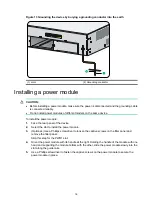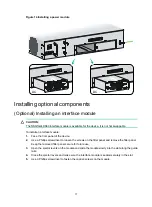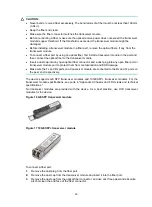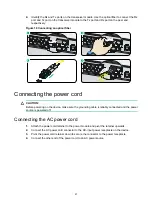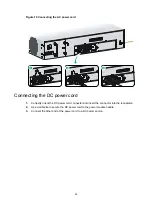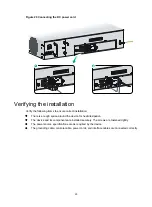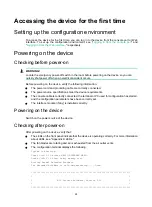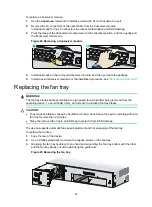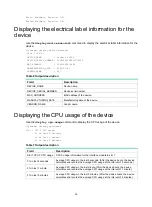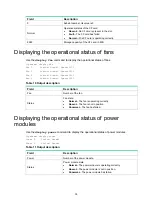
20
CAUTION:
•
Never bend or curve a fiber excessively. The bend radius of a fiber must be not less than 100 mm
(3.94 in).
•
Keep the fiber end clean.
•
Make sure the fiber connector matches the transceiver module.
•
Before connecting a fiber, make sure the optical receive power does not exceed the transceiver
module's upper threshold. If the threshold is exceeded, the transceiver module might be
damaged.
•
Before installing a transceiver module in a fiber port, remove the optical fibers, if any, from the
transceiver module.
•
To connect a fiber port by using an optical fiber, first install a transceiver module in the port and
then connect the optical fiber to the transceiver module.
•
Insert a dust cap into any open optical fiber connector and a dust plug into any open fiber port or
transceiver module port to protect them from contamination and ESD damage.
•
Make sure the Tx and Rx ports on a transceiver module are connected to the Rx and Tx ports on
the peer end, respectively.
The device supports GE SFP transceiver modules and 10GE SFP+ transceiver modules. For the
transceiver module specifications, see ports in "Appendix A Chassis and FRU views and technical
specifications."
No transceiver modules are provided with the device. As a best practice, use H3C transceiver
modules for the device.
Figure 16 GE SFP transceiver module
Figure 17 10GE SFP+ transceiver module
To connect a fiber port:
1.
Remove the dust plug from the fiber port.
2.
Remove the dust cap from the transceiver module and insert it into the fiber port.
3.
Remove the dust cap from the optical fiber connector, and use dust free paper and absolute
alcohol clean the end face of the fiber connector.

